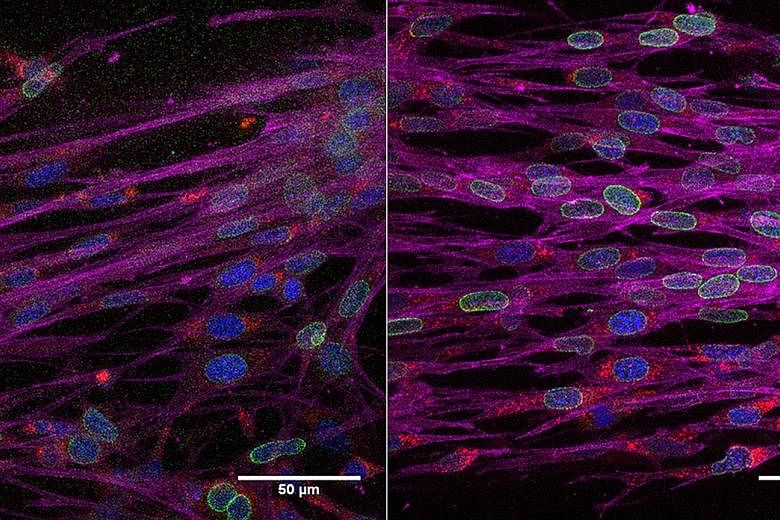These images are of fibroblasts, the most common connective tissue cells.
They produce the structural framework for tissue, synthesise the extracellular matrix and collagen, which support cells, and play a critical role in wound healing. But during the cellular ageing process, fibroblasts lose their ability to contract, leading to stiffness.
A study by the Mechanobiology Institute at the National University of Singapore has shown that these fibroblasts can be rejuvenated, or redifferentiated, by being geometrically confined on micropatterns - tiny patterns that direct cell growth and division.
The microscopic images show a group of control (left) and rejuvenated fibroblasts (right), with fluorescent labels highlighting the nucleus (blue), nuclear envelope - the membranes surrounding the nucleus (green), and cytoskeleton which gives the cell its shape (magenta).
The presence of more contractile proteins (in red) in the rejuvenated fibroblasts indicates that they have recovered their ability to contract. These rejuvenated cells were observed to have reduced DNA damage, and enhanced cytoskeletal gene expression.
The results of this study have been published in the Proceedings of the National Academy of Sciences. The research team believes that these mechanically rejuvenated fibroblasts could potentially be used as clinical implants in regenerative medicine and stem cell engineering.

